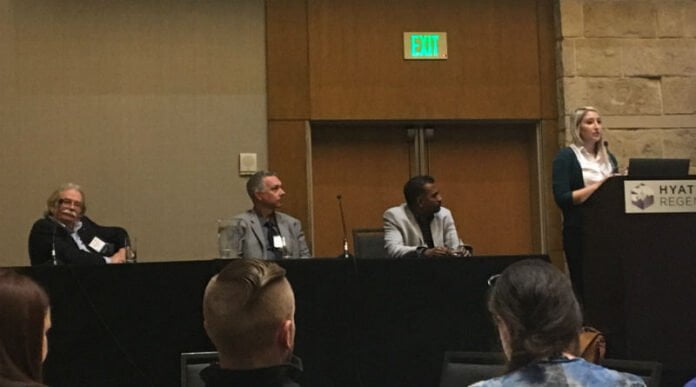The impact of phase change materials on building efficiency
Builders have been moving away from using thermal mass to store heat for a long time as design trends have shifted away from concrete and stone in favor of lighter frame buildings with large windows, according to Premnath Sundharam, global sustainability leader at DLR Group.
However, these strategies have been providing energy efficient building strategies since before energy efficiency was a thing.
Phase change materials (PCM) provide a way for builders to create energy efficient structures that can be more effective than concrete blocks or stone.
Related: Offsite Construction Works for Women
Sundharam led a session at Rocky Mountain Green in Denver on Thursday explaining phase change materials and their use in building, including a project DLR Group is involved in. DLR Group was a sponsor at the expo.
Phase change materials have been around for about 70 years, Harvey Bryan, a specialist in building technology at Arizona State University, said during the session. Maria Telkes, a scientist at Massachusetts Institute of Technology in the 1940s, experimented with using a salt solution in tin cans to provide solar heating.
That early experiment successfully heated the home for about three years, Bryan said. “The problem is salt and tin don’t work very well and the cans corroded.”
Building materials have become more innovative, and can be adapted to meet building needs in lighter structures.
In 2010, in an experiment at ASU, Bryan built two sheds, one with PCM and one without. Bryan and his team of researchers found that combining PCM with capillary tubing effectively cooled the test shed better than the control shed.
Hydronic radiant cooling coupled with PCM helped reduce energy demand by 30%, Bryan said.
Mark Richards, applications engineering manager for Phase Change Energy Solutions, demonstrated his company’s ENRG BioPCM blanket. The product is a sheet of sealed envelopes filled with a palm-oil derived material that melts as temperatures rise, and stores heat. As temperatures fall again, the material returns to a solid phase and releases heat to keep the temperature in the room stable.
In a test, the ENRG blanket reduced the temperature change to just 4 degrees, compared to 26 degrees in the building without PCM.
The product is being used in a case study that will take place with the construction of Canyon View High School in Waddell, Arizona. DLR Group is providing the planning, architecture, engineering and interior design services. The BioPCM product will be used in one of the academic buildings on the campus.
The school is expected to open for the 2018 school year. DLR Group will track performance when school starts to learn more about how PCM performs over time and the impact on occupants.








